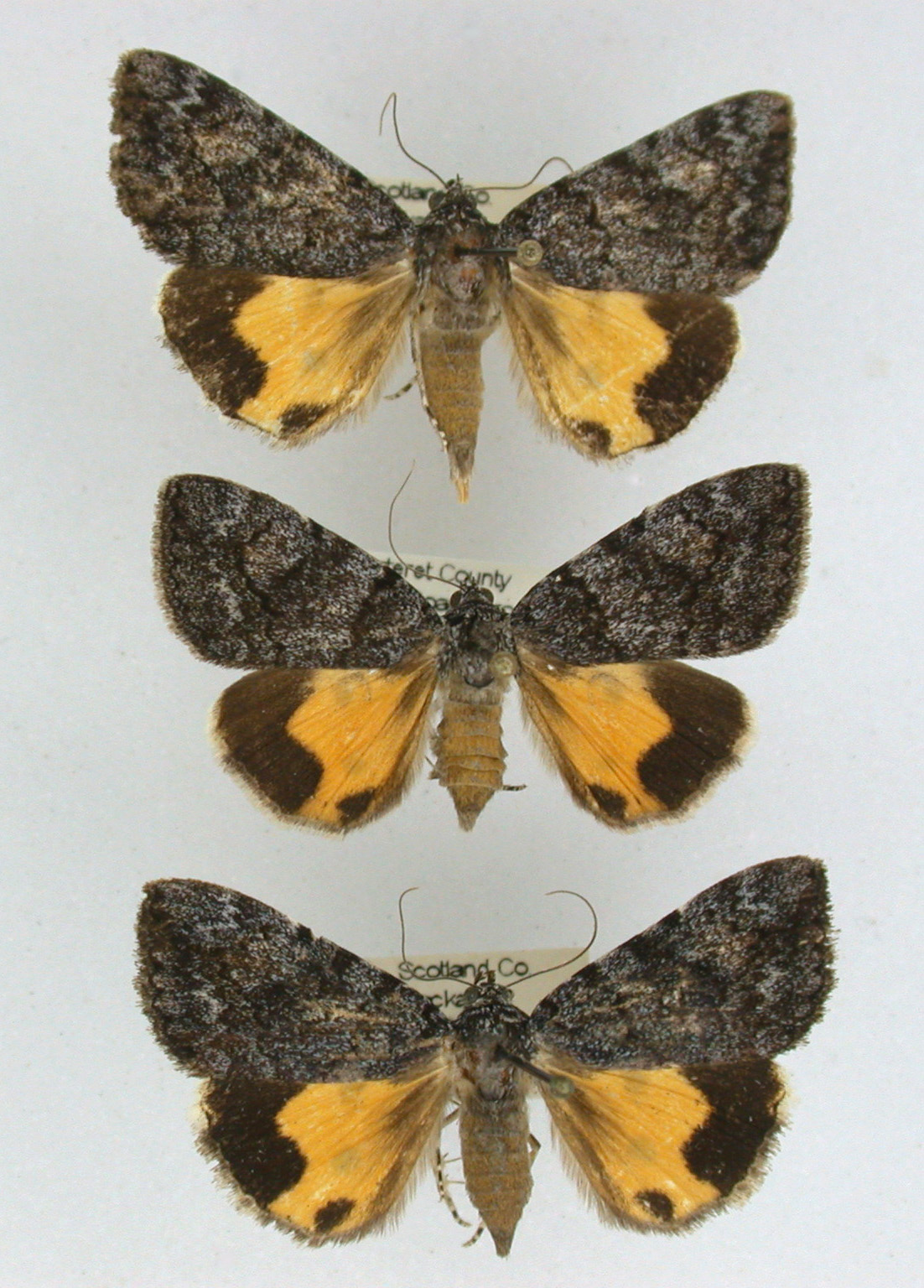Taxonomy
Superfamily:
Family: Subfamily: Tribe: P3 Number: MONA Number: Other Common Name:
Comments: One of 103 species in this genus that occurs in North America (Lafontaine and Schmidt, 2010, 2015), 67 of which have been recorded in North Carolina. Jair belongs to the amica group, which is characterized by having yellow-orange hindwings that lack the dark postmedian band and have a partial black band and a separate spot on the outer margin. In addition to jair, other members of this group include amica, lineella, and at least one undescribed species.
Identification
Field Guide Descriptions: Covell (1984) Online Resources: MPG , BugGuide , iNaturalist , Google , BAMONA , GBIF , BOLD Technical Description, Adults: Barnes and McDunnough (1918); Sargent (1976); Schweitzer et al. (2011)Technical Description, Immature Stages: Wagner et al. (2011)
Adult Markings: Catocala jair is very similar to C. amica, with no differences in the hindwing pattern or on the undersides. The most noteworthy differences are that the postmedian is straighter and less dentate in jair than in amica (or lineella) and there is a more extensive area of brown between the postmedian and subterminal lines (Barnes and McDunnough, 1918; Sargent, 1976). The brownish coloration in the subterminal area, however, appears to apply primarily to the population in the Florida Peninsula (including the type specimens). Over most of the range of this species, including North Carolina, a more blackish form dominates that has a slightly more dentate postmedian and a lesser amount of brown in the subterminal space (Schweitzer et al., 2011). Our populations of jair are more blackish than the mostly blue-gray lineella and less mottled. Sexes are similar.
Wingspan: 35-40 mm (Sargent, 1976)
Adult ID Requirements: Identifiable from good quality photos of unworn specimens.
Immatures and Development: Larvae are pale grayish brown, although very similar to others in the amica group and need to be reared to adulthood to confirm their identities.
Larvae ID Requirements: Identifiable only through rearing to adulthood.

 »
»

 »
»